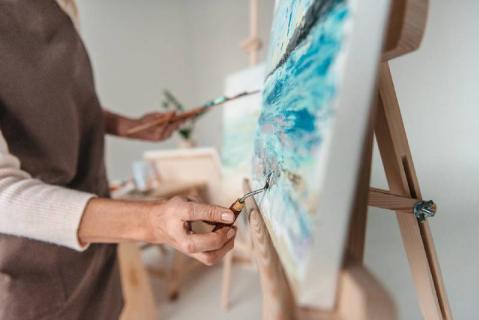Art has long been considered a mirror reflecting society, a voice for the voiceless, and a catalyst for emotions. But can it truly be a force for tangible change in our world? While some may argue that art exists primarily for aesthetic pleasure, there's a growing body of evidence suggesting that Fine Art Paintings and other artistic expressions can be powerful agents of social and cultural transformation.
Art as a Mirror of Society
At its core, art is a reflection of the human experience. It captures the joys, sorrows, struggles, and triumphs of individuals and communities. Through visual storytelling, artists can shed light on social issues, raise awareness about injustice, and spark conversations that lead to positive change. From powerful portraits that challenge stereotypes to abstract works that evoke deep emotions, art has the ability to illuminate the complexities of the human condition.
Art as a Catalyst for Empathy
One of the most potent effects of art is its capacity to foster empathy. By immersing viewers in the lives and perspectives of others, art can break down barriers and build bridges between different cultures and communities. Whether it's a painting depicting the struggles of refugees or a sculpture that celebrates diversity, art can inspire compassion and understanding.
Art as a Vehicle for Social Change
Throughout history, art has been used as a tool for activism and social change. From the powerful murals of Diego Rivera to the provocative works of contemporary artists, art has the power to challenge the status quo and ignite movements for justice. By giving a voice to marginalized communities and sparking public discourse, art can be a catalyst for positive transformation.
The Economic Impact of Art
Beyond its social and cultural impact, art also plays a vital role in the economy. The art market, including the buying and selling of Buy Original Art and Buy Paintings Online, generates billions of dollars annually. Art galleries, museums, and auction houses create jobs and contribute to local economies. Moreover, investing in art can be a sound financial strategy, as artwork often appreciates in value over time.
The Role of Art in Education
Art education is essential for fostering creativity, critical thinking, and problem-solving skills. By engaging students with visual arts, we can cultivate a generation of innovative thinkers and empathetic citizens. Art in schools can also help to bridge academic subjects with real-world experiences, making learning more engaging and meaningful.
Art as a Healing Force
Art therapy has been proven to be effective in treating a variety of mental and emotional conditions. The process of creating art can be therapeutic, allowing individuals to express their feelings and find healing through self-expression. Additionally, viewing art can provide solace, inspiration, and a sense of connection to something larger than oneself.
While it may not always be immediately apparent, art has the power to shape our world in profound ways. By serving as a mirror, a catalyst, and a vehicle for change, art can inspire, educate, and empower individuals and communities. As we continue to navigate the complexities of the 21st century, the role of art becomes increasingly important.
So, the next time you admire a beautiful painting or experience a thought-provoking artwork, remember that its impact extends far beyond its aesthetic appeal. Art has the potential to change lives, shape cultures, and create a better world for all.
Are you interested in discovering exceptional artworks? Explore our collection of Fine Art Paintings on Art Finders and experience the transformative power of art firsthand.
Know more https://persontopersonartsales.com/can-art-effect-change/

